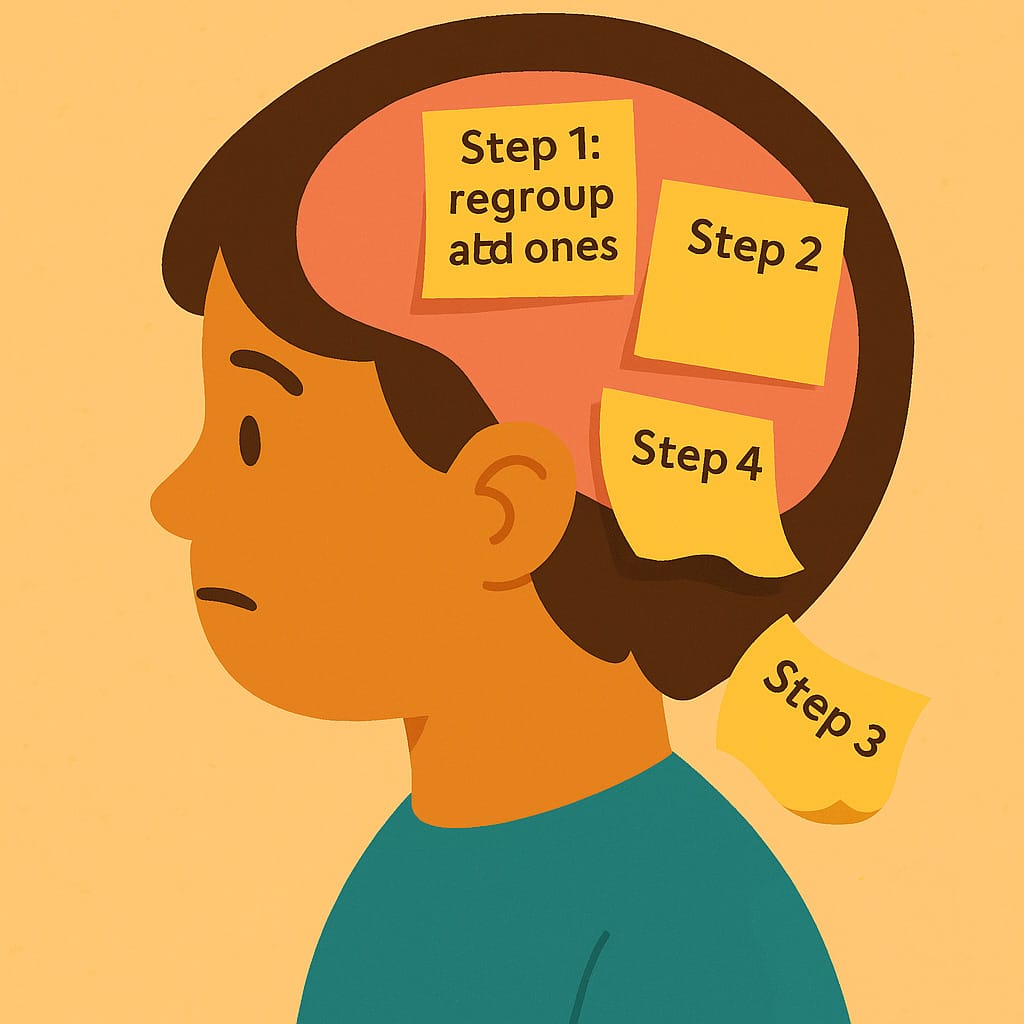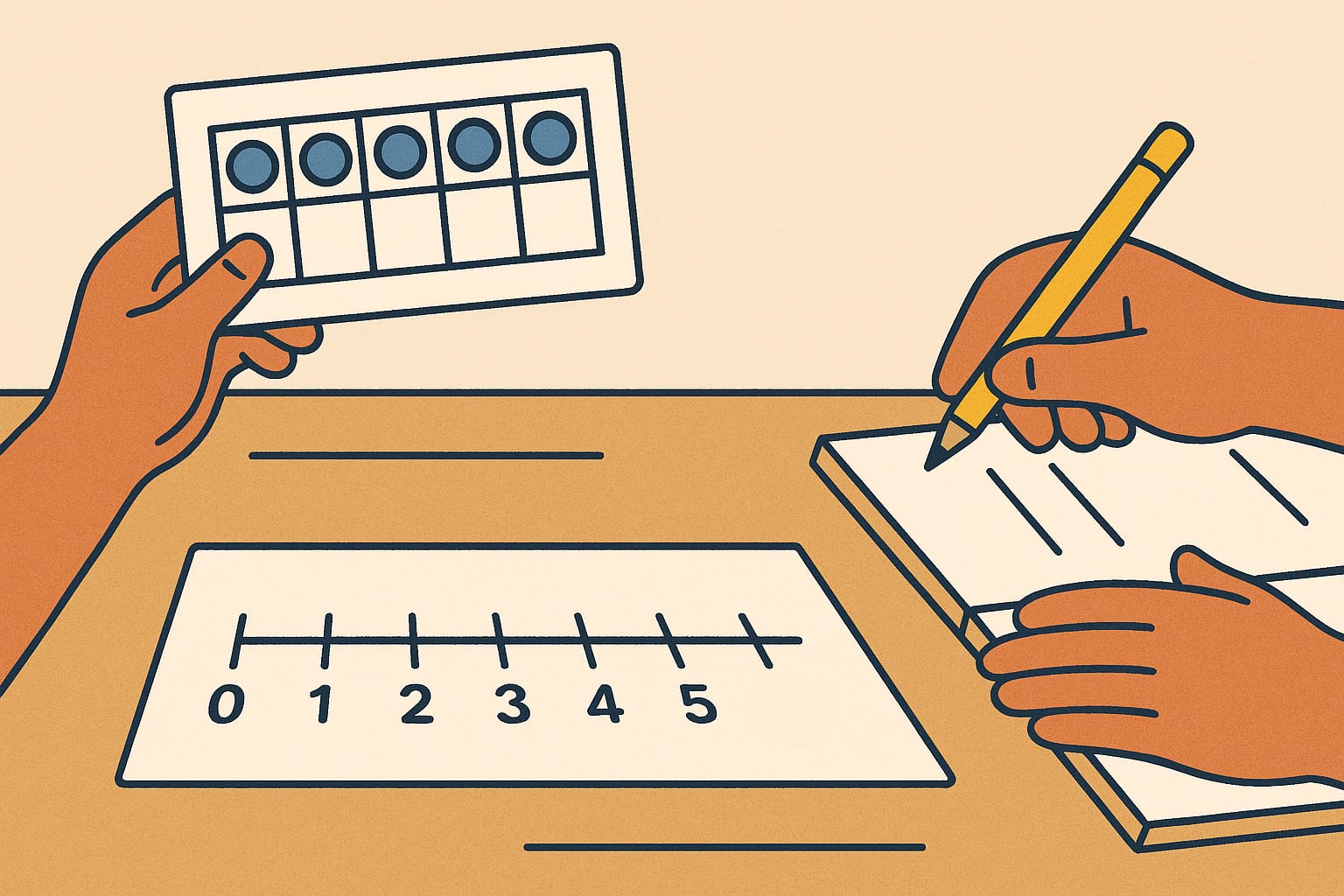Struggling with Multi-Step Math? It’s Not the Numbers — It’s the Memory
Why does my child forget how to solve a word problem they just learned yesterday?
If you’ve asked this question, you’re not alone. For many neurodivergent children—especially those with ADHD or Autism—math isn’t just about numbers. It’s a working memory challenge. And until we address that, no amount of practice sheets or online math games will move the needle.
Here’s the hard truth:
Most math struggles in neurodivergent learners aren’t about intelligence. They’re about executive function, especially working memory. And the moment we start targeting that directly, math outcomes begin to shift—fast.
🧠 What Is Working Memory (And Why It Matters in Math)?
Working memory is the mental sticky note that holds information long enough for us to do something with it—solve a problem, follow multi-step directions, or remember what “3 groups of 5” means while actually doing the multiplication.
Now imagine doing math when that sticky note keeps falling off.

For learners aged 5–9 with a weak working memory, this is daily life. And it’s exhausting.
Research published in Developmental Neuropsychology found that working memory is a strong predictor of math achievement, even more than IQ for young children (Bull & Scerif, 2001). Kids with ADHD or executive function challenges often show deficits in this area, making even basic arithmetic feel overwhelming.
🚩 5 Signs Your Child’s Math Struggles Are Tied to Working Memory
They forget steps in a multi-step math problem—even ones they’ve practiced before.
They do better with oral instructions than written ones (or vice versa).
They reverse digits or skip numbers when counting or writing.
They can answer math facts correctly orally but freeze on a worksheet.
They lose their place when solving problems mentally.
If this sounds familiar, here’s the good news: working memory can be supported, scaffolded, and strengthened—especially during these foundational years.
🔧 7 Working Memory Tips to Boost Math Outcomes (Backed by Research)
1. Use Visual Anchors (Don’t Just Talk, Show!)
Children with weak working memory often struggle to hold verbal instructions. Visual anchors like number lines, tens frames, or color-coded steps reduce cognitive load.
👉 Research-backed: Visual representations help reduce working memory demands and improve performance in math tasks (Swanson & Beebe-Frankenberger, 2004).

2. Break Down Instructions Into One Step at a Time
Avoid “First do this, then this, then that.” Break it down. One instruction. One step. One success at a time.
✨ Parent tip: Use sticky notes with single-step instructions or apps that present one prompt at a time.
3. Turn Abstract Math Into Physical Actions
Use manipulatives like counters, blocks, or even snacks to make math tangible. If the brain doesn’t have to hold everything in memory, it can focus on reasoning.
🧠 Working memory offload = deeper understanding.
4. Repeat. Repeat. Repeat. But With Variation.
Don’t drill the same exact problem. Instead, vary the numbers and context. Spaced repetition and retrieval practice are memory superpowers.
📚 Cognitive science 101: Retrieval practice builds durable learning pathways (Roediger & Butler, 2011).
5. Encourage Verbal Math Talk
Ask your child to talk through their thinking—out loud. This externalizes working memory and makes invisible thinking visible.
🗣️ “I put 7 counters here, and 3 more here, so that’s 10.”
🎤 Pro tip: Let them explain to a sibling, pet, or even a toy. It cements memory.
6. Build Mental “Checklists” Using Mnemonics
For multi-step problems (like solving word problems), teach easy-to-remember checklists: e.g., R-U-C-S (Read, Understand, Choose numbers, Solve) or the Singapore Bar Modeling.
🧩 Metacognitive supports help students regulate and organize their working memory.
7. Use Timers—but Not for Speed
Time-bound tasks aren’t about racing—they’re about creating structure. “We’ll do math for 5 minutes, then take a break” helps maintain focus and reduces overload.
⏳ Use sand timers, visual countdowns, or even fun apps.
🧩 Bonus: Reimagine Math as a Working Memory Game
Instead of worksheets, try games that sneak in working memory practice:
“Build the Number”: You say a number (“12”), they use counters to build it using different combinations (e.g., 6+6, 5+7).
“Step-by-Step Story Problems”: Make up silly math stories where each new piece is revealed step-by-step. The goal: remember and solve at the end.
“Reverse the Steps”: You solve a problem, and they tell you what you did first, next, and last.
These aren’t just fun—they train the brain to hold and manipulate information, the very heart of working memory.
🎯 Final Word for Parents: Shift Your Focus
Stop obsessing over whether your child can memorize math facts.
Start asking: “How can I support their working memory today?”
Because once the cognitive scaffolding is in place, the math starts to click. And for neurodivergent learners, that click can be life-changing.
🧠 Further Reading for Curious Parents:
Bull, R., & Scerif, G. (2001). Executive functioning as a predictor of children's mathematics ability. Developmental Neuropsychology, 19(3), 273–293.
Swanson, H. L., & Beebe-Frankenberger, M. (2004). The relationship between working memory and mathematical problem-solving in children at risk and not at risk for serious math difficulties. Journal of Educational Psychology, 96(3), 471.
Roediger, H. L., & Butler, A. C. (2011). The critical role of retrieval practice in long-term retention. Trends in Cognitive Sciences, 15(1), 20–27.


Comments
Your comment has been submitted successfully!